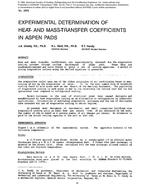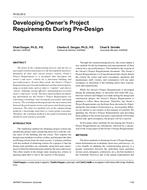The owner of a 82,000 ft2 office building in Arcadia, California, installed an energy management system incorporating demand control to avoid a southern California utility’s time-of-use rate. The time-of-use rate is mandatory for all buildings with demands greater than 500 kW. This all-electxic building utilized a variable air volume system with electric reheat, and cooling is from four 60-ton compressors. Before demand control was instituted, this building’s monthly average demand was 540 kW; after installation the average has been 398 kW. Load shedding begins when demand exceeds 450 kW. The priority of the load shedding is: (1) electric, water heating, (2) internal zone reheat, (3) external zone reheat, and (4) compressors. Originally, it was believed that the greatest demand savings would occur during months with mild weather. This belief has been proven false.
Summaries of hourly demand data were collected from the utility’s billing data tapes plus the building’s EMS system and is presented in this paper. The owner has experienced average monthly savings of over $800 per mc)ntli resulting from just demand control.
Units: I-P
Citation: Symposium, ASHRAE Transactions, 1985, vol. 91, pt. 2B, Honolulu, HI
Product Details
- Published:
- 1985
- Number of Pages:
- 18
- File Size:
- 1 file , 1.1 MB
- Product Code(s):
- D-HI-85-19-2


